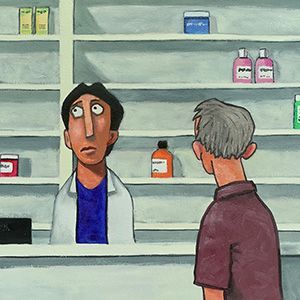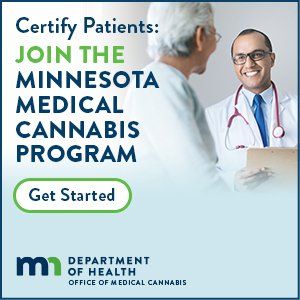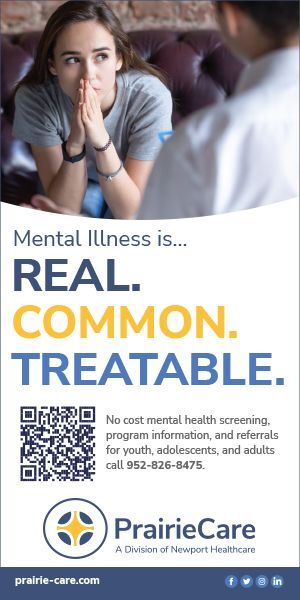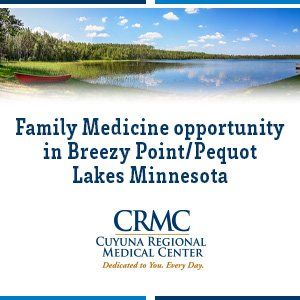he health care industry is faced with an alarming rate of drug shortages, posing significant challenges for physicians and patients alike. In July 2023, there were 309 drug products in shortage according to the American Society of Health-System Pharmacists (ASHP)—a record high for the last decade. A large share of these ongoing shortages are sterile injectable forms of critical acute drug products that are used in emergency situations. More drug shortages, however, are occurring for chronic and oral medications as well, such as metformin, ampicillin, liquid acetaminophen, and others.
cover story one
Navigating Drug Shortages
Preparedness and patient advocacy
By David J. Margraf, PharmD, PhD and Stephen W. Schondelmeyer, PharmD, PhD
Disruptions of pharmaceutical supply chains resulting in drug shortages became more visible as the COVID-19 pandemic surged resulting in more stress on the already over-burdened U.S. health care system, although drug shortages have been present in the U.S. market for decades. Many shortages affected the availability of critical acute drugs that were needed to treat COVID-19 patients. Early in the COVID-19 pandemic (February 28, 2020), the Resilient Drug Supply Project (RDSP) examined drug shortages among critical acute drugs and found that 21% were in short supply at the national level, according to the U.S. Food & Drug Administration (FDA), and drug shortage reports from the ASHP showed that 40% of critical acute drugs had shortages at regional or national levels. These critical acute drug shortages were occurring at the same time that the health care system was being challenged by a growing number of COVID-19 patients, limited availability of ICU beds, and shortages of health care staff and PPE to protect them.
Americans have come to expect that the drugs they need will always be available at their neighborhood pharmacy or the community hospital. That is not always true anymore. The present level of drug shortages in the United States is shocking and it is unacceptable. Drug shortages occur when the demand for a particular medication surpasses the available supply, leading to delays, alternative therapies, or even complete unavailability of critical drugs. The impact of shortages on patients can vary depending on their specific medical conditions and the safety and efficacy of available drug alternatives. When patient access to essential medications is compromised, it can lead to delays in treatment, inadequate symptom management and increased health care burdens and costs. This article provides practicing physicians with valuable insights into the causes of drug shortages, effective ways to discuss the issue with patients, practical approaches to prescribing alternate medications when necessary and strategies for advocacy.
Consolidation of generic drug manufacturers has resulted in limited competition and decreased manufacturing capacity.
The RDSP, a collaboration between the University of Minnesota’s Center for Infectious Disease Research and Policy (CIDRAP) and the PRIME Institute, focuses on the supply chains and global disruptions in access to critical drugs for life-saving and life-sustaining treatment. Since its inception in 2018, our mission has been to identify, monitor and address global disruptions that can compromise the availability of critical medications. Our initial focus revolved around the most critical acute drugs—drugs that “when medically needed in acute care must be available and used within hours or days of the need or the patient will suffer serious outcomes, which may include disability or death.” By tracking the availability and supply chains of these critical acute medications, we strive to ensure that patients receive the necessary treatments promptly and without interruption. Furthermore, in response to the unprecedented drug supply chain vulnerabilities faced with the pandemic, we monitored shortages of crucial drugs used in treating COVID-19 patients. On the policy front, our advocacy efforts aim to promote transparency and resilience within the drug supply chain. By engaging with policymakers, we seek to drive meaningful changes that bolster the stability and accessibility of life-saving drugs worldwide.
Root Causes of Drug Shortages
To effectively address the drug shortage crisis, it is essential to understand the underlying factors behind them. Many factors in the drug market have played a role in exacerbating the frequency and severity of drug shortages. These factors include complex supply chains, manufacturing issues, regulatory challenges, market consolidation, economic pressures, natural disasters and other considerations.
Supply chain complexity: The globalization of pharmaceutical manufacturing has led to intricate and often fragile supply chains. The company marketing a drug product usually is not the one that made the active ingredient or the finished dosage form of the drug product. For example, Pfizer does not make the Pfizer COVID-19 vaccine. So, a disruption at any point along the supply chain, such as raw material shortages, manufacturing problems or distribution challenges, can trigger disruptions and drug shortages. The complexity of these supply chains makes it difficult to quickly identify and resolve issues, leading to prolonged shortages. Sometimes there is a limited number of suppliers of active pharmaceutical ingredients (APIs) for a critical generic drug product. The anticoagulant heparin, a natural product commonly sourced from the intestinal mucosa of pigs, in China often suffers from API shortages due to diseases in the pork industry. Another example is the recent shortage of iodinated contrast media from GE Healthcare seen in May 2022. The API and finished dosage form for several iodinated contrast media products (e.g., Omnipaque) were made in a factory in China that was placed on lockdown due to the COVID-19 outbreak in the surrounding area. This shortage of contrast media led to delayed or missed diagnostic and treatment opportunities that for some patients may have meant serious consequences.
Manufacturing issues: Outdated or problematic facilities, including equipment malfunctions, contamination concerns or quality control problems, have resulted in significant drug shortages. For example, the recalls of Chantix, losartan, valsartan, ranitidine, metformin and others due to N-nitroso dimethylamine (NDMA) contamination, a potential carcinogen, highlight the impact of drug quality issues on supply availability. Similarly, several recalls of albuterol inhalers due to dosing inaccuracies and mislabeling further emphasize the impact of manufacturing issues on drug shortages. Teva had to close a California plant in 2021 due to mold contamination issues, leading to the recall of 2.5 million vials of drugs. Another example is Intas Pharmaceuticals, whose products are marketed in the U.S. by Accord Healthcare. Intas shut down a manufacturing site (in Gujarat, India) this year after the FDA found various production problems, a lack of sterility controls and employees shredding documents. As a result, around 300-400 drug products at the National Drug Code (NDC) level are no longer available, including critical oncology drugs such as carboplatin and cisplatin.
Regulatory challenges: Regulatory processes and requirements can also contribute to drug shortages. Delays in obtaining manufacturing approvals, inspections, or resolving compliance issues can disrupt the supply of medications. Regulatory actions such as recalls or withdrawals due to safety concerns can further deplete the available drug supply, leading to shortages. In 2018 there were global recalls of valsartan from specific manufacturing facilities in China and India due to NDMA contamination. This case exemplified the complexities in identifying sources of contamination, coordinating recalls and implementing quality control measures. The result was widespread shortages of valsartan in the U.S. market.
Market consolidation: Consolidation within the pharmaceutical industry has led to fewer manufacturers producing specific drugs. This consolidation limits redundancy and resilience in the supply chain, making it more susceptible to disruptions. For instance, the consolidation of generic drug manufacturers has resulted in limited competition and decreased manufacturing capacity, leading to shortages of essential medications. One recent example of consolidation is Pfizer’s acquisition of Mylan Pharmaceuticals, which was completed in November 2020. Pfizer is one of the largest brand name pharmaceutical firms in the world and owns Upjohn (and Greenstone)—operating as generic divisions of Pfizer. Pfizer acquired Mylan Pharmaceuticals—the largest American-owned generic company—and combined it with Upjohn renaming the new entity as Viatris. A number of drug products previously marketed by both firms have now been discontinued and the level of competition has decreased. This consolidation has led to shortages of several generic drug products (including sterile injectables) with low-volumes and low-profit margins.
Economic pressures: Market pressures have impacted some medications more than others and have especially impacted low-profit generic sterile injectables such as calcium chloride or sodium bicarbonate. Additionally, drug shortages have been worsened by significant systematic failures, such as corporate bankruptcies. Earlier this year, Akorn’s bankruptcy and closure of their Illinois facility put several essential medications at risk of shortages.
Natural disasters: Apart from the challenges facing drug supply resiliency in the pharmaceutical market, natural disasters have wreaked havoc on the drug supply chain. We are currently evaluating the consequences of a tornado that recently struck the Pfizer facility in Rocky Mount, North Carolina. This facility is a major producer of sterile injectables, supplying approximately 8% of all sterile injectables sold to U.S. hospitals. Additionally, in 2017, Hurricane Maria devastated Puerto Rico, causing critical shortages of IV saline bags and disrupting patient care across the United States for several months. That shortage led to the widespread cancellation of nonemergent surgeries. The impact of such natural disasters on the drug supply chain underscores the importance of preparedness and proactive measures to address future challenges.
Natural disasters have wreaked havoc on the drug supply chain.
Discussing Drug Shortages with Patients
Open and transparent communication between physicians and patients is crucial when addressing drug shortages. By initiating a proactive discussion, physicians can help manage patient expectations, provide information and explore alternative treatment options. What follows are some key considerations.
Setting realistic expectations: Physicians can inform patients about the presence or possibility of drug shortages and emphasize that they are working diligently with pharmacists, wholesalers and manufacturers to find suitable alternatives. The causes of drug shortages are usually beyond the physician’s control, but you can reassure patients that their health and well-being remain a top priority of stakeholders in the supply chain.
Educating patients: Provide patients with comprehensive information about the specific drug shortage, its root causes (if known) and the potential impact on their treatment plan. Consider using resources such as the American Society of Health-System Pharmacists (ASHP) and the U.S. Food and Drug Administration (FDA) drug shortage databases. These sources often provide an expected resolution date, although at times resupply information is limited. This allows patients to be more involved in decision-making and can promote trust in the physician-patient relationship. Physicians can explain the steps taken to identify suitable alternatives and ensure that patient safety and efficacy are prioritized.
Exploring alternative treatment options: Collaborate with colleagues, pharmacists and patients to identify alternative medications or therapies that can effectively manage a patient’s condition. Pharmacists are well-equipped to work with physicians to find suitable alternatives for a wide variety of treatments. Discuss the potential benefits and risks of alternative options, taking into account the patient’s medical history and individual needs.
Addressing patient concerns: Drug shortages can be distressing for patients, who may worry about the effectiveness and safety of alternative medications. Providing evidence-based information can help alleviate their worries and reassure patients that alternative medications have undergone rigorous testing and are considered appropriate alternatives. In addition, physicians can work closely with pharmacists and other healthcare professionals to explore potential solutions, such as sourcing medications from alternative suppliers or considering therapeutic alternatives. Open communication with patients about the reasons for the shortage and the steps being taken by regulatory agencies and manufacturers to mitigate its impact can foster trust and understanding. Finally, emphasizing the importance of adherence to prescribed medications and discussing any potential adjustments to treatment plans can help patients feel more confident and supported during periods of drug shortages.
Advocacy for Patients and Physicians
Physicians can play a vital role in advocating both for their patients and for the broader health care system to address drug shortages effectively. What follows are strategies to consider.
Engaging with professional organizations: Medical organizations and patient advocacy groups may raise awareness about drug shortages and urge policymakers to take action. Physicians can actively participate in these organizations by sharing their firsthand experiences and insights regarding the impact of drug shortages on patient care. They can collaborate with other health care professionals to compile data and evidence highlighting the severity of the issue and its implications for patient outcomes. By joining forces with professional organizations, physicians can advocate for regulatory reforms that address the root causes of drug shortages and promote a more resilient pharmaceutical supply chain. They can also participate in educational initiatives organized by these organizations to raise awareness among colleagues about the challenges of drug shortages and potential strategies to manage them effectively. Through involvement, physicians can contribute to a collective effort aimed at finding sustainable solutions to mitigate the impact of drug shortages on patient health and well-being.
Collaborating with pharmacists: Establish a strong collaborative relationship with pharmacists, who are often the first to identify and communicate drug shortages. Pharmacists can provide valuable insights on suitable alternatives and facilitate seamless transitions for patients. Also, pharmacists can navigate inquiries in the supply chain to find access to the needed drug or to appropriate alternatives. Regular communication with pharmacists allows physicians to stay updated on current drug availability and any potential changes in the supply.
Communicating with legislators: Reach out to local, state and federal legislators to voice concerns about drug shortages. Highlight the impact of these shortages on patient care and emphasize the need for legislative action to address the underlying causes. Physicians can share their firsthand experiences and advocate for policies that promote manufacturing redundancy and resilience, supply chain transparency and improved regulatory processes. Physicians can provide evidence-based data and research to legislators, demonstrating the severity and consequences of drug shortages on patient health outcomes. By participating in hearings or town hall meetings or submitting written testimonies, they can effectively raise awareness about the issue and influence policymakers to prioritize solutions. Collaborating with medical organizations and patient advocacy groups can amplify their voice and strengthen the advocacy efforts to combat drug shortages. Physicians can also engage in discussions with legislators to explore potential legislative initiatives, such as incentives for domestic drug manufacturing, streamlined regulatory pathways for critical medications or measures to ensure a stable supply of essential drugs during emergencies. Through active and consistent communication, physicians can play a crucial role in shaping legislative actions that address drug shortages and ultimately improve patient care and public health.
Prescribing Alternatives and Ensuring Patient Safety
When faced with a drug shortage, physicians must be prepared to prescribe suitable alternative medications without compromising patient safety or efficacy. What follows are some considerations.
Familiarize yourself with alternatives: Stay updated on therapeutic alternatives to commonly used medications in your practice. Consult reliable drug references and clinical guidelines to identify appropriate therapeutic alternatives. Work with pharmacists in your area to find appropriate alternatives that are readily available.
Evaluate safety and efficacy: Before prescribing an alternative medication, thoroughly assess its safety profile, efficacy and potential interactions with the patient’s existing medications. Consider consulting with colleagues, specialists or pharmacists if needed. It is crucial to consider the patient’s medical history, coexisting conditions and individual factors that may impact treatment selection.
Engage in shared decision-making: Involve the patient in the decision-making process, explaining the rationale behind the alternative medication and addressing any concerns they may have. Patients with shared decision making are more likely to adhere to the treatment plan. Schedule appropriate follow-ups to monitor the patient’s response and adjust the treatment plan if necessary.
Conclusion
Drug shortages pose significant challenges for physicians and patients alike, necessitating proactive communication, preparedness and patient advocacy. Physicians can navigate these complex issues more effectively by understanding the root causes of drug shortages and engaging in open dialogue with patients. By collaborating with professional organizations, pharmacists and policymakers, physicians can advocate for sustainable solutions and contribute to a more resilient health care system. By staying informed about alternative medications and prioritizing patient safety, physicians can ensure uninterrupted care and optimal patient outcomes even in the face of drug shortages. Supply chain disruptions and drug shortages are going to persist. To prevent severe health implications and provide humane care, we must commit to safeguarding drug supply chains to ensure the availability of critical medications and to advocate for a more robust and responsive pharmaceutical market.
David J. Margraf, PharmD, PhD, is a pharmaceutical research scientist at the PRIME Institute and a collaborator on the CIDRAP’s Resilient Drug Supply Project at the University of Minnesota.
Stephen W. Schondelmeyer, PharmD, PhD, is a professor of pharmaceutical economics in the College of Pharmacy at the University of Minnesota and is the co-principal investigator for CIDRAP’s Resilient Drug Supply Project.
MORE STORIES IN THIS ISSUE
cover story one
Navigating Drug Shortages: Preparedness and patient advocacy
By David J. Margraf, PharmD, PhD and Stephen W. Schondelmeyer, PharmD, PhD
cover story two
The New Noncompete Agreement Laws: What they mean for physicians
By Jennifer A. Forbes, JD and Benjamin J. Kramer, JD




















